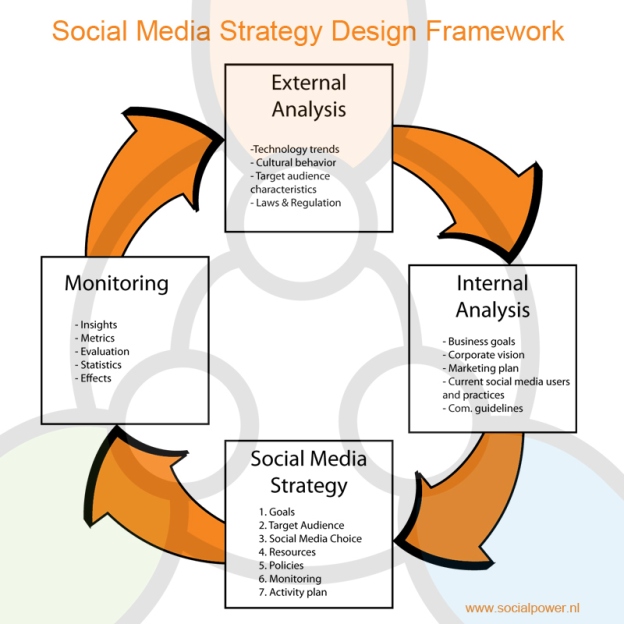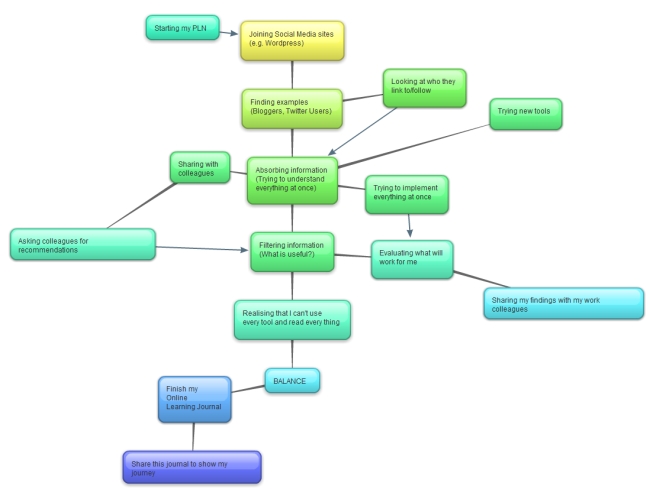Evaluative statement (Using three examples from my Online Learning Journal)
|
|
Library 2.0 and participatory library services
Librarian 2.0
https://libinfostudies.wordpress.com/2014/02/08/library-2-0-and-participatory-library-services/
This blog entry contains a description of the skills needed for an information professional to become successful in a Web 2.0 environment. In my opinion, this entry about Librarian 2.o is one of the strongest entries in my Online Learning Journal (OLJ). I was able to synthesise my readings to form what I believe to be a clear, succinct description of these desirable skills and attributes.
Although this entry became my favourite, I would make changes if I were to write it again. The first point and the last, “The flexibility to keep up with emerging technology” and “The confidence to try new things” are very similar and could, I think, be merged in to one point. As this would leave me with four points, I would have the opportunity to add another skill: The ability to learn collaboratively. In order for a library to successfully adopt Web 2.0 technology, staff must be willing and able to pool their knowledge. In order for the information professional to meet the needs of users they must learn the ways in which users are seeking out information, and how users feel the library can support them. This “give and take” approach to learning is essential for Library 2.0 to be successful.
In my opinion, this OLJ entry best demonstrates the understanding I have gained about the theory and successful practice of Library 2.0 principles.
|
|
Making Web 2.0 work for your organisation
Examples of Web 2.0 working for libraries & info agencies
https://libinfostudies.wordpress.com/2014/02/08/making-web-2-0-work-for-your-organisation-2/
In this blog entry, I compared the practices of three libraries that are using social media. I then used this comparison to compile a list of the positive ways in which social media can impact on a library’s ability to provide quality service. In choosing three very large libraries – Ones which I presumed would have greater staff time and resources to commit to social media strategies – I ensured that there were many tools to examine and compare. However, I believe that due to the similarities between the three libraries, their social media presence was somewhat homogeneous.
My OLJ entry would have benefitted from the comparison of libraries that served a broader range of user groups: For example, a comparison between State, academic and school libraries. This would have allowed me to show that libraries are using the same social networking tools in different ways according to the age, academic level and interests of their user groups.
In this entry, I demonstrated my knowledge of the different social networking technologies used by libraries, and the ways in which information professions are able to employ these tools to meet the needs of their users. In addition to identifying different social media tools (Such as Facebook, Twitter and Pinterest), I was able to identify the ways in which they are being used to support essential library services.
|
|
Social networking and information policy
Social media/networking policies for organisations
https://libinfostudies.wordpress.com/2014/01/12/social-networking-and-information-policy-2/
In this OLJ entry, I developed a list of five key points which I would use to advise a Social Media Working Party. When writing this list, I wanted to cover Fair Use and Copyright; ethical concerns such as organisational and user privacy; and the protection of the organisation’s reputation. I also made sure to address the need for a flexible policy that is able to reflect new trends in technology, and one that allows employees to be responsible for their decisions when using social media.
I chose to consider this question from the point of view of a Social Media Working Party that is drafting a policy for employee’s use of social media. Through my work as a Library Technician, I feel that I have become familiar with guidelines around patron codes of conduct when using library computers, and so I felt that this option would present me with a greater challenge.
Covering each point that I wanted to make within the word limit was quite difficult; I feel that my explanations suffered as I tried to make them as succinct as possible. Other concerns I would have liked to have addressed include inappropriate language and content, and the use of work social media profiles to express personal opinions.
However, I believe that in the OLJ entry, I was able to demonstrate my understanding of and commitment to relevant values in the information profession.
|
|
Reflection: My development as a social networker, and implications for my future as an information professional
Before participating in this unit, I had very limited knowledge of social media, the many ways in which it is used, and the impact it has upon our society. Prior to this study, I had a personal Facebook account and had used Twitter for a short time. Because of the frequency with which I check my Facebook, I believed that I already had a very thorough understanding of social networking sites, and was overwhelmed to discover how much I had to learn.
One of the biggest changes that I have noticed in myself is an enthusiasm for exploring new tools. Whereas before I was not aware how much was available, I am now aware of so many different ways in which social media can be used in libraries. This awareness has caused me to become more curious: To be always looking for new tools, apps and widgets that I can explore and use in my library. Additionally, I have begun to explore social networking sites that I can use in my personal time, recently signing up to Instagram and Tumblr. I believe this change in attitude will have professional benefits as I become a more innovative and dynamic staff member.
In addition to discovering new types of social media, this unit caused me to view it in different ways. Previously, I saw social networking as a ‘toy’: A way in which to fill time and see what was happening in the lives of my friends. While undertaking this unit, however, I discovered that social media and Web 2.0 technologies have come to play a vital role in our lives. It was surprising to find that social media and Web 2.0 play a role in politics (xplanevisualthinking, 2009); activism (Kagan, 2010); identity formation (Mallan & Giardina, 2009) and in learning (Jenkins, Clinton, Purushotma, Robison & Weigel, 2006). This discovery has led me to think of social media not as a toy or game, but as a valuable new part of the way our society functions.
Participation in this unit has made me look critically at the way in which social media is handled in the library I work for. Our current method of implementing new social media is very haphazard; as a result, our attempts to engage with our users in this has had very limited success. As I learned about social media strategy, I was able to recognise the errors in our library’s approach to social media: For example, our tendency to try new tools in the hope that users will respond, as opposed to identifying an actual user need and then using these tools to meet that need, as is recommended by Farkas (2008). Now that I am familiar with the steps and considerations involved in drafting a social media strategy, I hope to use this knowledge to ensure that our future attempts are more successful.
Learning about Web 2.0 and Library 2.0 has challenged my overall idea of what is involved in being a part of the information profession. Prior to beginning this unit, my understanding of my role as an information professional was one of the ‘gatekeeper’ of knowledge, who collected and vetted information (Jenkins et al., 2006, p. 44). However, I am now beginning to see my role as that of a participant in a two-way conversation: Libraries must listen to their users to find out what they truly need. Based on my readings, I have come to see value in tools such as Wikipedia – And to understand that instead of simply telling library patrons that they should use other, more reliable sources, I should be looking at their use of these tools to see how I might help them learn in a way that they are comfortable with (Garfinkel, 2008; Wittenberg, 2007). By becoming less rigid in my view of “correct” methods of finding information, I hope to better relate to patrons and to provide them with a service that suits their information needs.
This unit has, on the whole, been very eye-opening for me both professionally and personally. I now feel confident to submit a social media proposal to the library where I am employed, and hope to use my new-found knowledge to make this plan more successful than previous attempts. I also hope to use this blog as I continue my studies, as a way of collecting resources and organising my thoughts. The future of libraries in general looks very bright provided that librarians keep up with new technologies, and I look forward to seeing the ways in which they are used to provide greater library service.
References:
Farkas, M. (2008). The essence of Library 2.0? in Information wants to be free. Retrieved from http://meredith.wolfwater.com/wordpress/2008/01/24/the-essence-of-library-20/
Garfinkel, S. (2008). Wikipedia and the meaning of truth. Technology Review, 111(6), 84-86. Retrieved from http://search.ebscohost.com/login.aspx?direct=true&db=f5h&AN=35342513&site=ehost-live
Jenkins, H., Clinton, K., Purushotma, R., Robison, A. J., & Weigel, M. (2006). Confronting the challenges of participatory culture: Media education for the 21st century. Retrieved from
http://digitallearning.macfound.org/atf/cf/%7B7E45C7E0-A3E0-4B89-AC9C-E807E1B0AE4E%7D/JENKINS_WHITE_PAPER.PDF
Kagan, M. (2010). What is social media NOW? Retrieved from
http://www.slideshare.net/mzkagan/what-is-social-media-now-4747765
Mallan, K. & Giardina, N. (2009). Wikidentities: Young people collaborating on virtual identities in social network sites. First Monday, 14(6), 1 June. Retrieved from
http://firstmonday.org/htbin/cgiwrap/bin/ojs/index.php/fm/article/viewArticle/2445/2213
Wittenberg, K. (2007). Credibility of content and the future of research, learning, and publishing in the digital environment. The Journal of Electornic Publishing, 10(1). Retrieved from
http://quod.lib.umich.edu/cgi/t/text/text-idx?c=jep;cc=jep;rgn=main;view=text;idno=3336451.0010.101
Xplanevisualthinking. (2009). Did you know 4.0. Retrieved from http://www.youtube.com/watch?v=6ILQrUrEWe8


